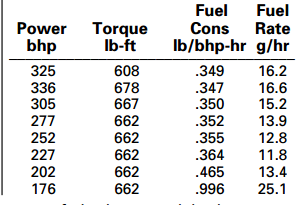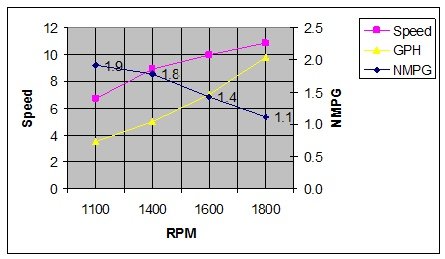Hello k9medic,
"So what I am gathering from the multitudes of posts are the following:
1.That since I extrapolated the fuel burn at 1100rpm, that the data is incorrect and the other RPMS must be as well."
The chart is a hypothetical representation of what your engine would burn if it had that exact loading curve. Did you believe that your boat was tested to make that chart or that your boat will behave exactly like any other boat with those engines? Do you believe that your fuel burn will remain the exact same per rpm if you add 4" of pitch to your props?
"2.That the CAT prepared data on the engines that are installed in my boat are not correct."
Same as above - the chart represents one possible loading of the engine. It is not representative of any particular boat it is a mathematical illustration.
"3.The travel logs that I keep showing distance traveled and fuel purchases are incorrect."
No - your travel logs are likely perfect.
"4 That I provide "fabricated number based on multiple choices.""
The laws of physics are pretty inflexible - it costs more hp to go faster, hp per unit of time costs more fuel, your mpg are way to flat to show the mounting resistance that boats hull has when approaching its calculated hull speed.
"At this rate, I would have better luck pushing a wet rope uphill than to convince some of you otherwise" You could make this same post over at boatdiesel - it will not go to well there I know for sure.
If you take your boat out at say 6 knots for say 100 miles and then return at say 10 knots your fuel use per mile will nearly quadruple. So there is a significance in knowing how this actually works.
If you start your fixed speed diesel genset and run with no load it will be using about 0.2 gph and when you switch on the AC units you can watch the governor add fuel as it goes up to about 0.6 gph for your AC to run. These engines are not fixed fuel per rpm so you cannot make that comparison.
Here is one boat test on a similar Sea Ray as yours - I am sure with a little time and searching you can get a few more as well.
http://www.powerandmotoryacht.com/boat-tests/sea-ray-420-sundancer-page-4







 ....always have tried to convey the almost infinite amount of variables in this topic.
....always have tried to convey the almost infinite amount of variables in this topic.